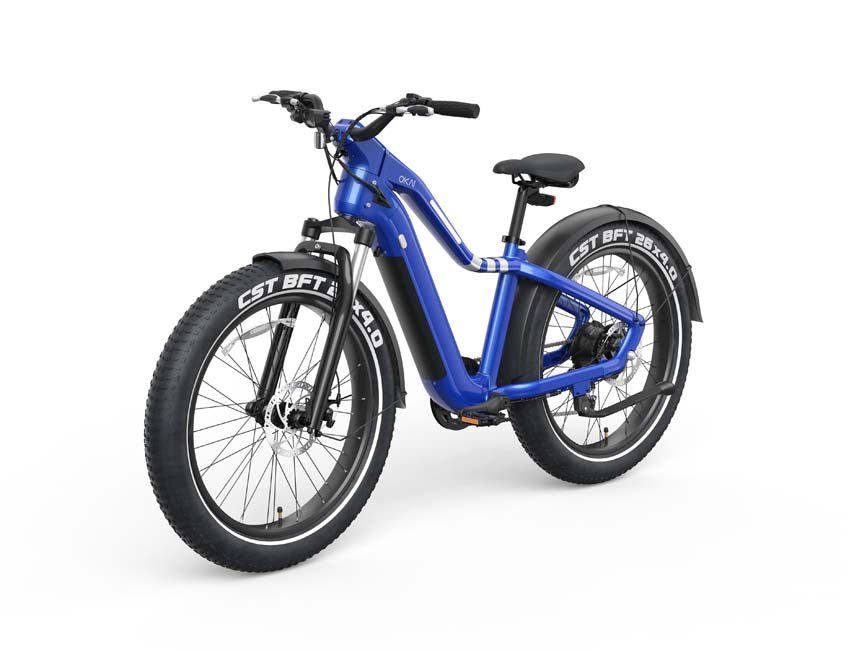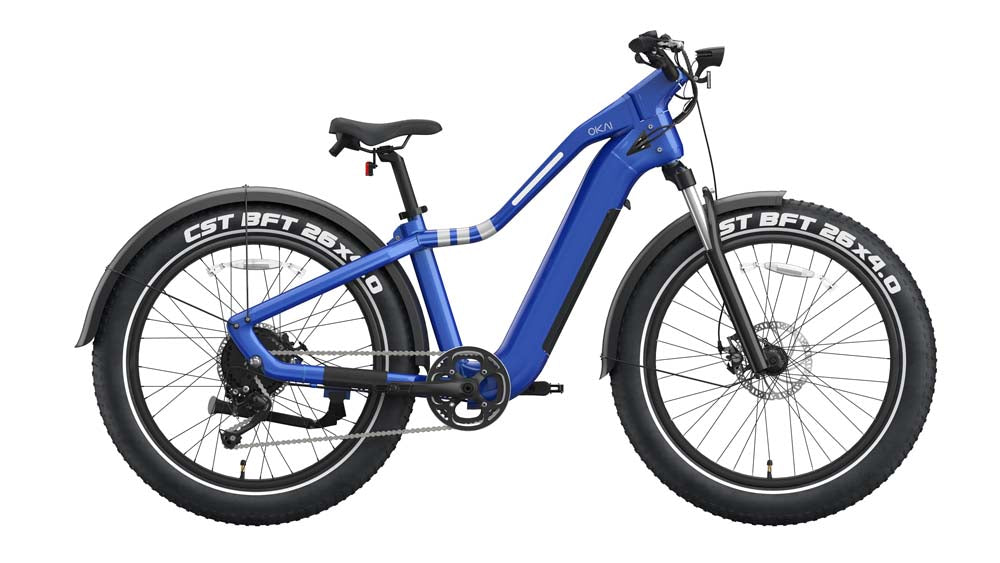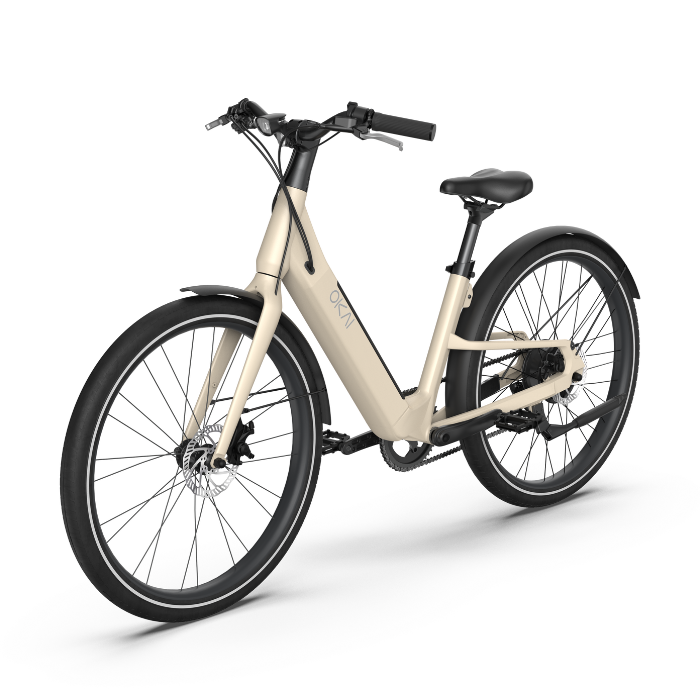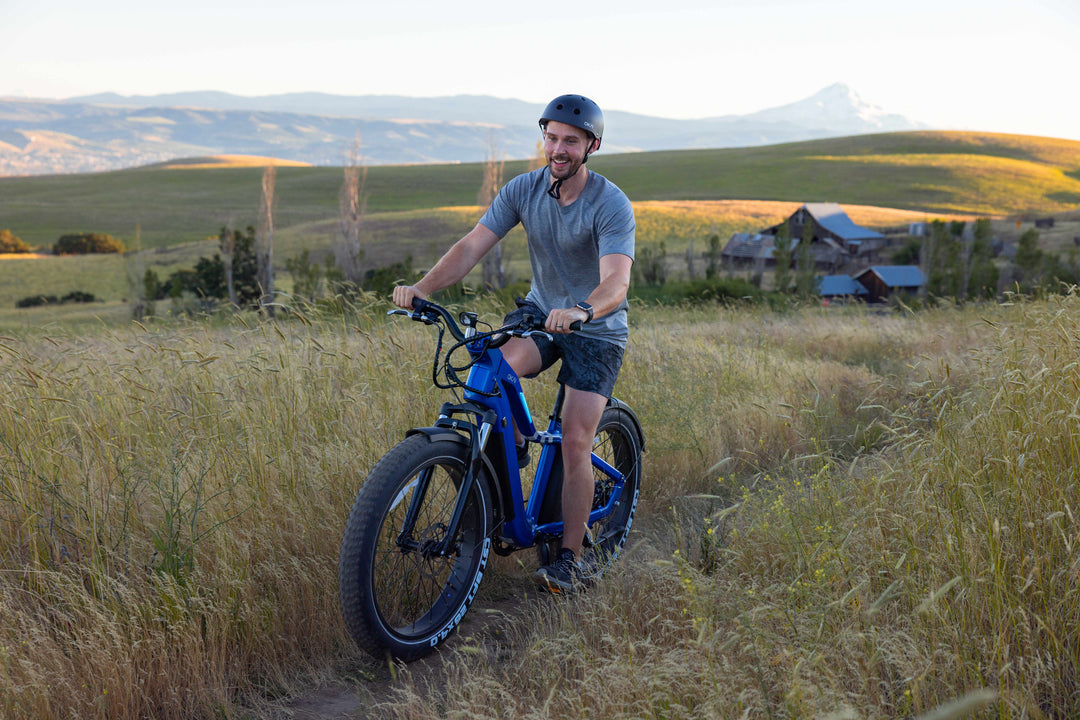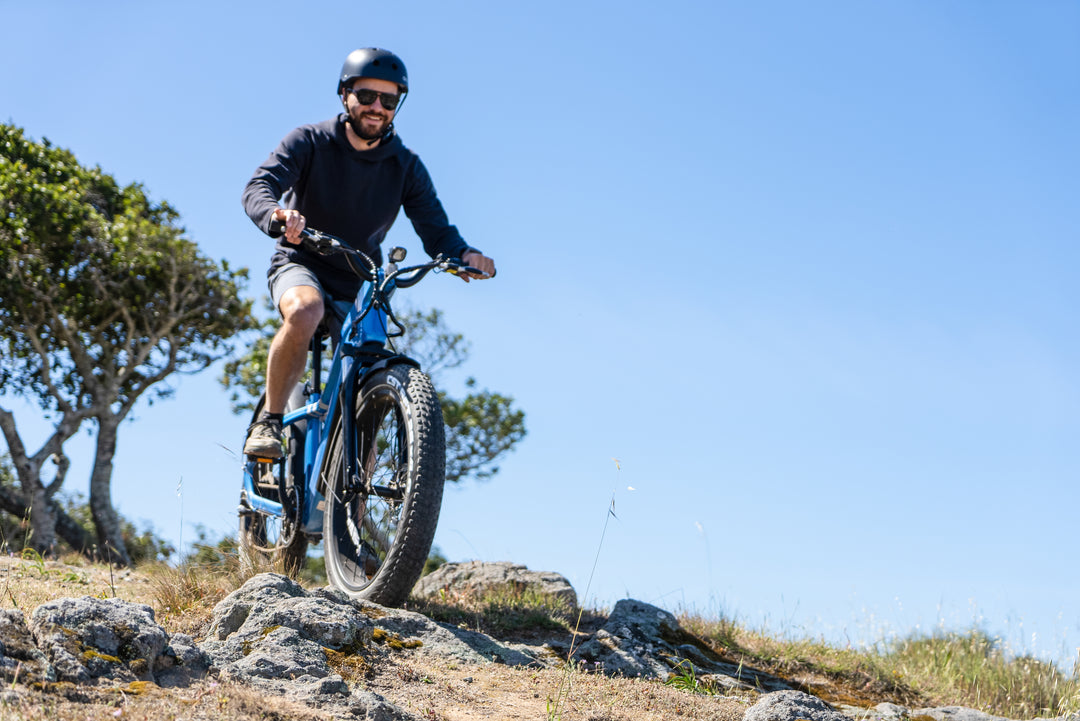Getting your electric bike set up so you get the best from it and so that you have years of comfortable riding is fundamental to enjoying your cycling. Bicycling is the most comfortable and efficient hobby, plus if you're using it as a commuter it'll save you a ton money and the environment a ton in carbon footprint.
With the massive support from the Bafang Hub Motor, many of us forget to think about our own input. Getting your saddle height spot on is a free way to get more out of your ebike and the outcomes are so extraordinarily beneficial that it’s just crazy to think that we might have been getting it wrong for so long.
With the introduction to the market of the most brilliant of all devices, the dropper seat post, a lot of people have forgotten about seat height adjustments. When the height of your seat is adjustable and the push of a button, is it really important? YES IT IS! On climbs and flats when you need the power, that’s when you need your seat in the right place.
So What if my Saddle isn’t at the Right Height?
-
Saddle Discomfort – the one That you’ll Notice Right Away
Too high and it’s going to hurt, you’re going to wiggle about on your saddle trying to compensate. Research shows that a reduction of 5mm in the seat height can reduce the maximum pressure on the saddle by 15-20%.
-
Knee Problems – the Long Lasting one
Sitting too low or too high can strain the knee, especially in the patella (knee cap) area, the stresses and strains caused by the action of pushing the pedals is increased and focused on the knee joint.
-
Lower Back Pain – the one That Makes you Groan Like Your Grandad
An incorrect saddle height makes left-right movements of the hip more likely, leading to straining the spinal discs in the lumbar region.
-
Hamstrings – the one That Will Have you Waddling Like a Duck.
Especially if you have short hamstrings, a high saddle can cause muscular tension and even cramps.
At the optimal saddle height the tension on that all important Gluteus maximus provides 20-30% of your force on the down stroke – if your seatpost is a few millimeters out on set-up, the muscle firing patterns and tensioning are all thrown out of kilter and you lose power.
I Think the Message is Becoming clear – so how do we get This Sorted?
The best, be all and end all way of getting your saddle at the right height is to see a professional bike fitter who’ll use a dynamic knee joint measurement to align you – but, that’s probably not what you wanted to hear. We take you through some easy ways to determine if you saddle is optimised.
Visual Clues
There are a number of visual indicators that will give you an idea of whether your saddle is way out. You’ll need to ask someone else to check out your riding style!
- Rocking in your saddle – Either your saddle is too high or WAY too low
- Ankle extension – are you pointing your toes to keep the pedals going round? – your saddle is too high
- A lot of the back part of the saddle is visible from behind – your saddle is too high and you’re compensating for the pain by sitting on the nose of your saddle.
Now to know how to adjust your e-bike to fit your body, follow the steps given below:
Step#1: Level and Center Your Bike Seat
You can start adjusting fit by placing the bicycle on a suitable level and checking that the seat is in the center. An excellent way to check the level is to establish a carpenter's level on top of the seat, but there is no need to worry if you don't have this tool. You can use a yardstick and compare the edge of the yardstick to a horizontal sightline. Make sure that the seat is centered on its railings over the seat post while adjusting your bike seat.
- A level seat supports your whole body weight.
- Offers optimum pedaling efficiency.
- Most riders do fine with level seats, but women typically tip it down, and men tip it up.
- The parts are probably stuck if the seat doesn't move after loosening the bolt(s).
- Tapping the seat of your bicyclewith the heel of your hand should free the parts of your bike.
The most accessible do-it-yourself seat-height adjustment is done on a trainer or indoors in a doorway with someone's help. Put on your cycling dress and shoes, place your bike in the entrance and get on and hold onto the doorjamb to support yourself or have your helper stand behind.
Place your heels on the pedals and pedal backward to find bike seat height. When your legs are extended at the bottoms of the pedal strokes, find the optimum seat height with your heels on the pedals.
- When you are pedaling with the balls of your feet over the pedals, you'll have the perfect bend in your knees.
- After finding the ideal position, mark it with a memorable mark to avoid the fitting process again.
- Consider memorizing the measurement, and this will help you set your seat height fast on a rental bike.
If you are riding in cycling shoes, the cleats on the soles must be positioned correctly. There are two necessary adjustments, fore and angular.
Fore
The cleat is positioned in such a way that the balls of your feet rest over the centers of the pedals when you are pedaling, and sight from the top to check this when you are on the bike. The balls of your feet form bumps on the insides of the shoes and should rest right over the axles or adjust the cleats as needed.
Angular
Usually, aligning the cleats provides a safe starting position. But to check the position and ensure it's suitable for your knees, go for some effortless rides. If you feel any stress, change the angle to control discomfort.
- When you have found an ideal cleat position, trace lines around the cleats so you can easily reposition a loose one and replace a worn cleat.
- Always use quality tools, lubricate threads and work with care, so you don't deprive the cleat bolts.
- Make sure the clips hold your feet in the optimum position using toe clips and straps, or get different-size clips.
Remember, this adjustment requires a helper, too. First, place your e-bike on a level surface next to a wall. Put on your biking clothes and shoes, get on and pedal backward until you are sitting in the ideal position on the seat. The fore seat adjustment is correct when a plumb line hanging from your kneecap touches the end of the crankarm, and this is a safe starting position.
Step#5: Thoroughly Check Handlebar Height
We recommend using these tips only to gauge adjustment as changing handlebar height requires know-how and parts you may not have. If you discover that you need a change, we are happy to provide the accessories and install them if you like.
The first bar-height check is comfort, but the bars may need adjustment if you're sore during or after rides. Inspect bar height by standing your bike on a level surface and viewing it from the side, comparing the size of the seat to the height of the bars. Remember that these guidelines work for most people, and it'll be experimental for some.
- If you'd like to measure the difference between your seat and bar height, rest a straight edge on the seat to extend over the bars and measure the difference with a ruler.
- Tall riders usually favor lower handlebars, and short riders prefer higher ones and acquire a comfortable back angle of about 45 degrees.
- Another way to "raise"mountain-bike handlebars is to replace your flat bars with a riser model, an inch or two higher than flat bars.
Step#6: Check Handlebar Reach
An excellent reach to the handlebars is the key to enjoying relaxing rides. If the bars are too close or far away, you may experience neck, back, shoulder, and hand pain, and it can cause you to scoot backward or forward on your seat all the time.
Put on your cycling clothes and shoes, mount your bike on a trainer and make sure the bike is level to check reach at home. Get on and pedal until you are comfortable with your upper body relaxed. Look ahead as if you were looking down the road and keep about an inch between the plumb line and the center of the handlebar.
- If you don't have a helper, photograph or video yourself from the side and check the picture.
- Your stem is probably too long if you need to scoot forward on the seat while riding.
- Indicators of proper reach include: being able to always comfortably bend the elbows while riding, a natural neck angle, having no hump in the back, and equal pressure on the hands and seat.
Step#7: Check Handlebar Size Carefully
Today, most bicycles come with handlebars that suit the person who fits the bike. So, it's likely that your handlebars do adequately. However, there are many different handlebar sizes and shapes, and changing might fine-tune your fit, providing additional comfort.
Width
Check width first. Drop handlebars should be about the same width as your shoulders for optimal control and efficiency. These bars come in sizes ranging from about 38-46 cm wide. So, the handlebar width should be 42 cm.
Flat-bar widths vary, too. Usually, riders who enjoy demanding, technical trails appreciate a little additional width of 24 to 27 inches, but all-around riders prefer a width of about 22 inches. Also, if the tracks you ride cut through tight spaces such as neighboring trees, you'll want to ensure the bars aren't too wide to clear the obstacles.
Shape
Handlebars come in various shapes, too.
- Flat bars have different bends and may include a rise to help you sit more upright.
- Drop bars feature anatomic bends in the hooks for better comfort and are sometimes bent differently on the tops to accommodate your wrists.
- Another consideration with drop bars is reached, the distance between the bar tops and bottoms. Usually, taller riders appreciate more reach.
- If your flat handlebars are wide, shorten them with a tubing cutter.
- Measure carefully and leave considerable space for the brake, shift levers, etc.



